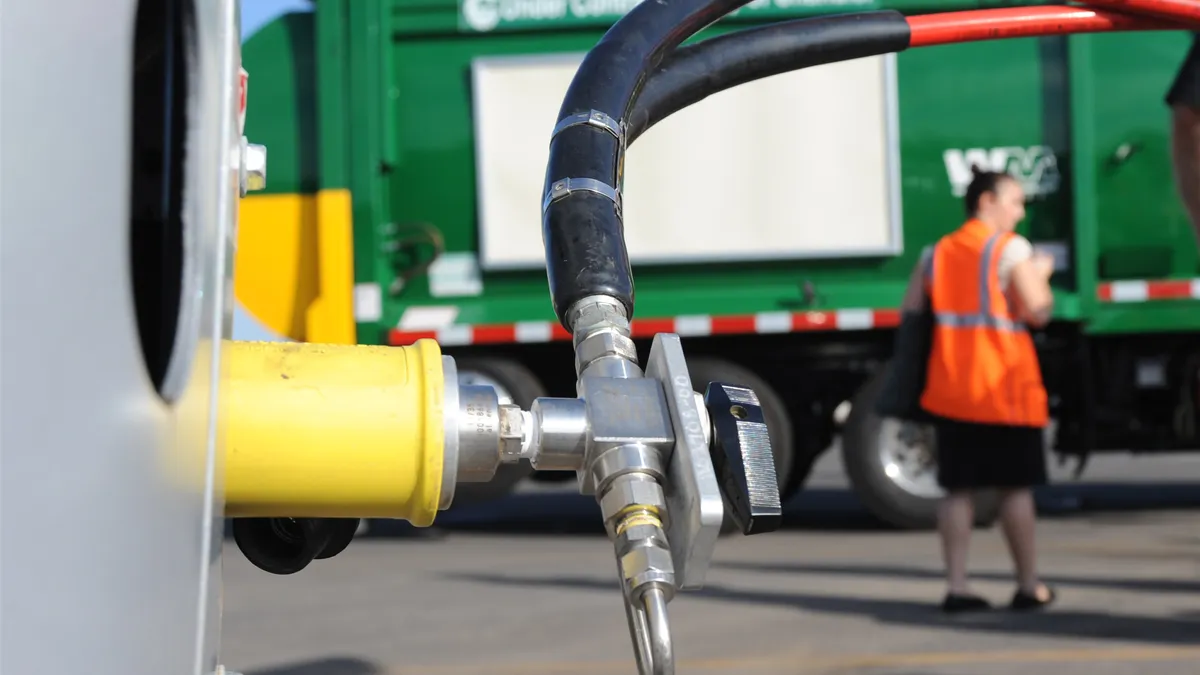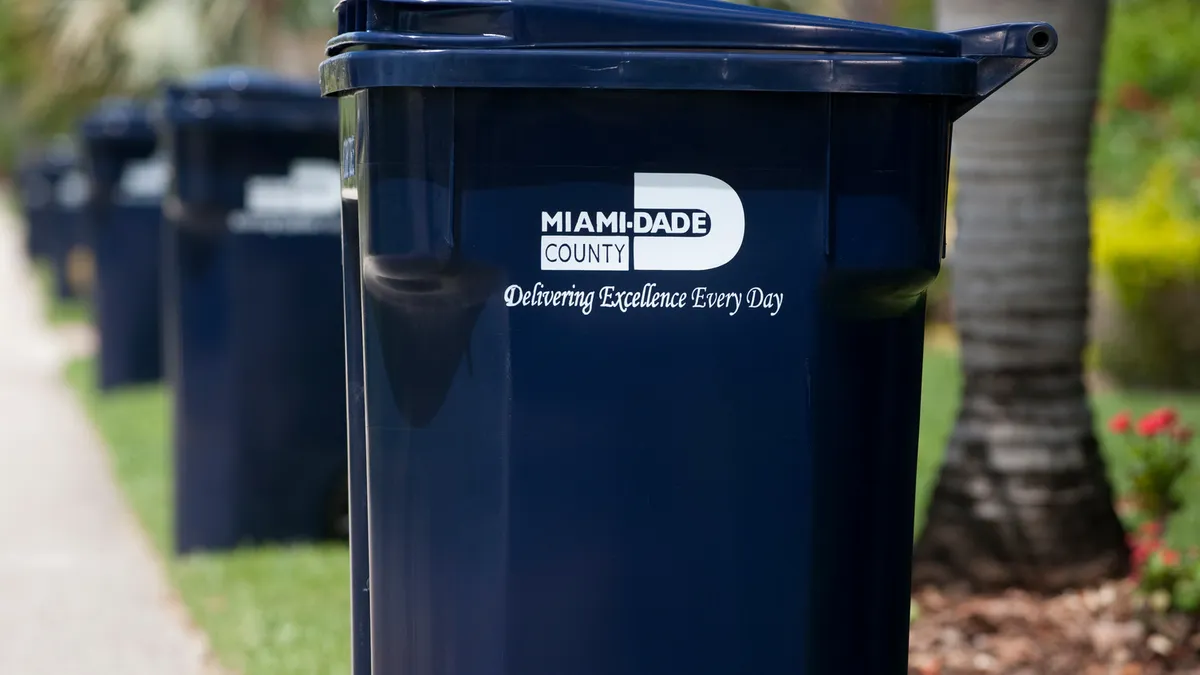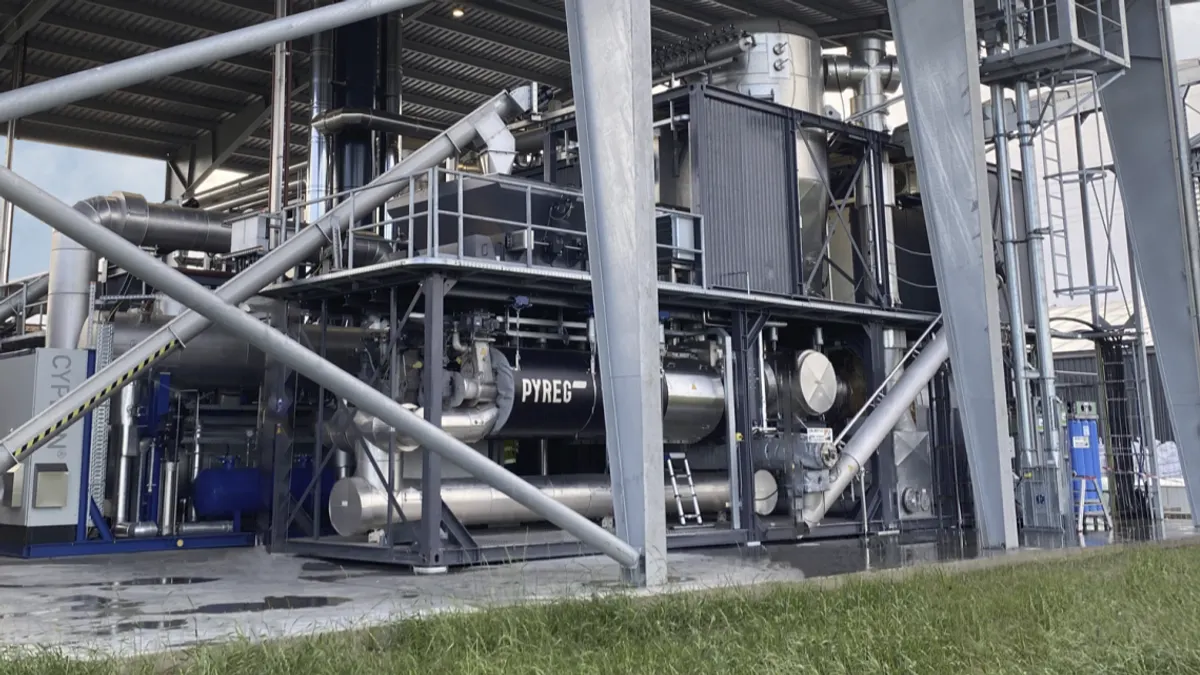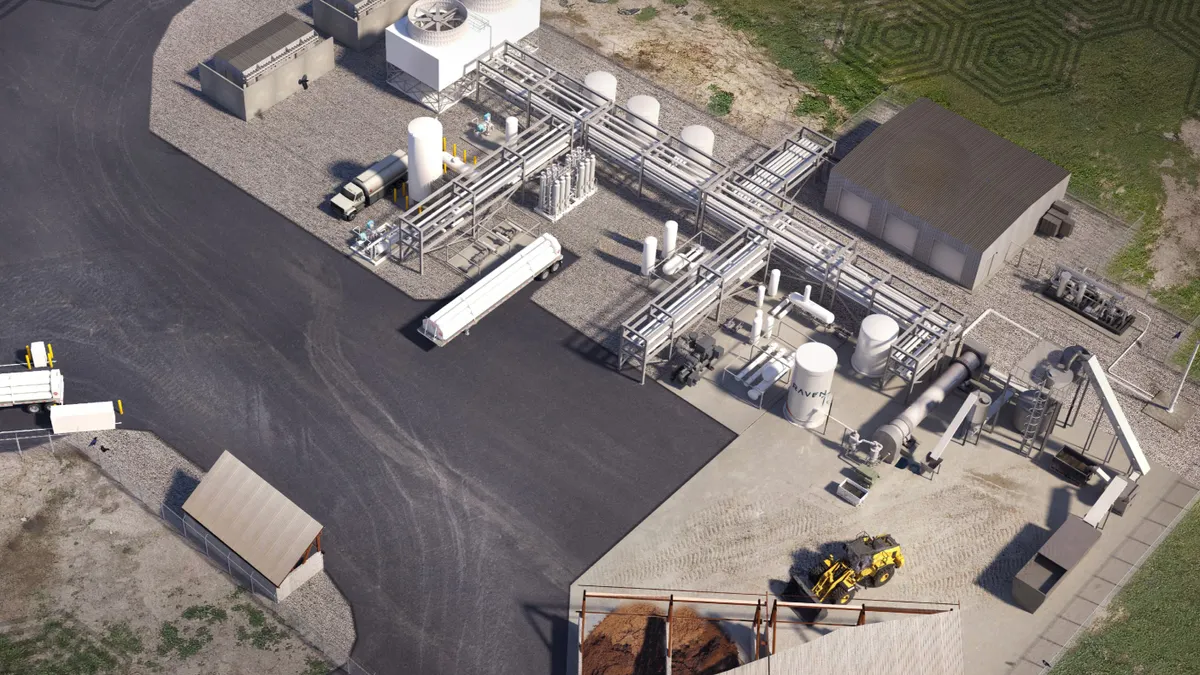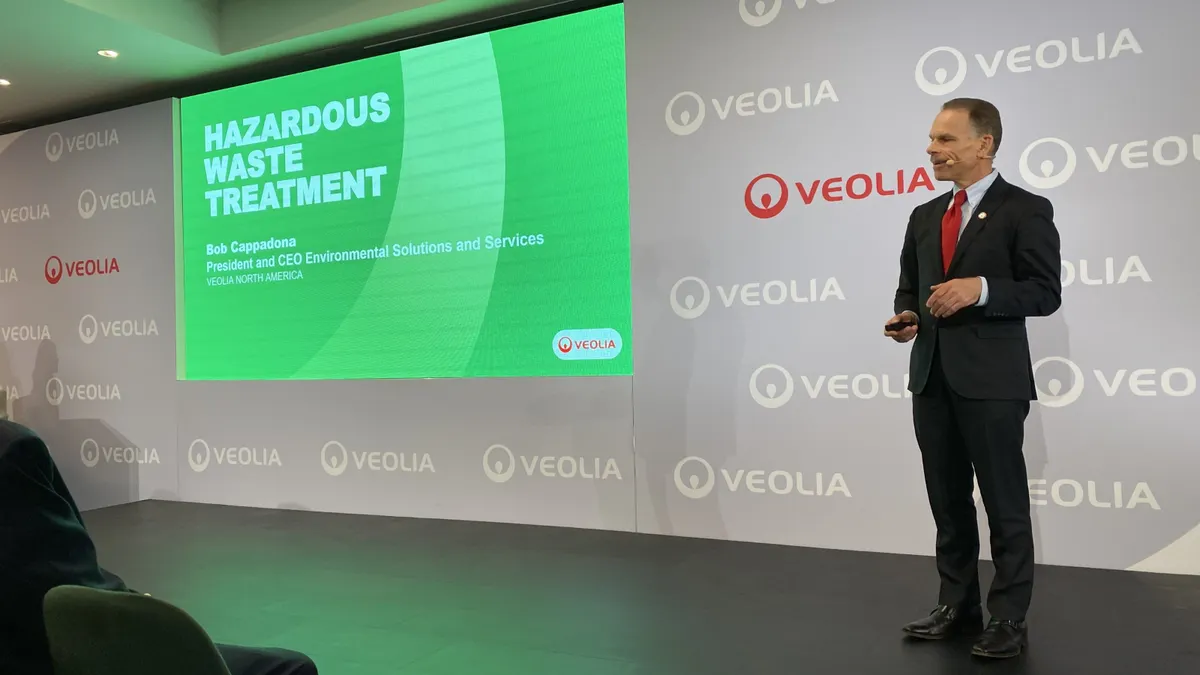Proposed changes to the federal Renewable Fuel Standard program could be a financial boost for operators generating energy from landfills and anaerobic digesters, depending on how the final details shake out.
The RFS was created in 2005 as part of an amendment to the Clean Air Act, with a goal to reduce transportation emissions by setting targets for the use of renewable fuels to “replace or reduce the quantity of petroleum-based transportation fuel, heating oil or jet fuel.” Refiners or importers of gasoline and diesel fuel must obtain credits called renewable identification numbers (RINs) in order to meet annual volume targets set by the U.S. EPA.
Waste facility operators have profited from those RIN credits, but political complications around setting the annual volume targets has led to fluctuating values. Now, for the first time, the EPA — along the Department of Energy and Department of Agriculture — is setting multiyear volume targets through 2025, as opposed to annual updates. EPA’s recent proposal would also establish an eRIN program targeted at electric vehicles, along with other notable changes.
The agency, which aims to finalize plans in June, received numerous suggestions during a recently-closed public comment period.
Volume growth
Compliance in the RFS program is driven by fossil fuel companies either blending renewable fuels into their products or purchasing RINs to meet renewable volume obligation (RVO) targets. The annual RVOs directly affect RIN values.
EPA’s latest calculation projected a 13.1% year-over-year increase in RNG volumes, based on recent market conditions, for RINs derived from cellulosic biofuel for compressed or liquid natural gas used in transportation. Industry groups are pleased to see the EPA expanding the program but feel its targets miss the mark.
"We're concerned with the fact that the rules only use a growth rate that looks back one year,” said Sam Wade, director of public policy for the RNG Coalition, citing pandemic and supply chain effects. The group, which is generally supportive of the program’s expansion, suggests a 30% growth rate that Wade said is "more realistic and reflects better what the RNG industry could do in this space.”
The RNG Coalition, which reports 276 active RNG sites in North America, is advocating for a regulatory mechanism that could automatically adjust annual RVO targets, and its comments cited numerous examples of expansion. On top of existing state and federal incentives, including the 2022 Inflation Reduction Act, the sector is seeing significant ESG-driven investment. Another 114 projects are under construction, with 150 more planned.
The National Waste & Recycling Association and Solid Waste Association of North America called for a “minimum” 30.4% growth rate, citing $2 billion in planned RNG investments by the waste industry’s top three companies alone.
WM recently increased its planned RNG spending by $390 million over the next three years — citing the RFS and other federal incentives. In prepared testimony for a January RFS hearing, Senior Counsel and Director of Regulatory Affairs Michael Jensen said these factors have “created a favorable environment for our sector to explore additional investment in RNG and biogas production infrastructure.”
Given these trends, some companies hope to encourage a shift in the EPA’s thinking.
“We're seeing increasing value of biogas assets now with multiple paths for monetization,” said Noah Kaye, a senior research analyst at Oppenheimer. "We're hearing that some players are certifying their construction pipelines with EPA in an effort to boost the projections for RNG generation.”
Sources say the agency must strike a complicated balance. Raising the RVO targets too much could risk litigation from energy companies, which has occurred before. Setting them too low could crash the RIN market.
"They need to err on the side of being aspirational and there are a lot of reasons, especially within the last 12 months, to support being more aspirational,” said Patrick Serfass, executive director of the American Biogas Council. His group is advocating for a minimum 20% growth rate, saying the current proposal “seems out of touch with even slow pandemic years.”
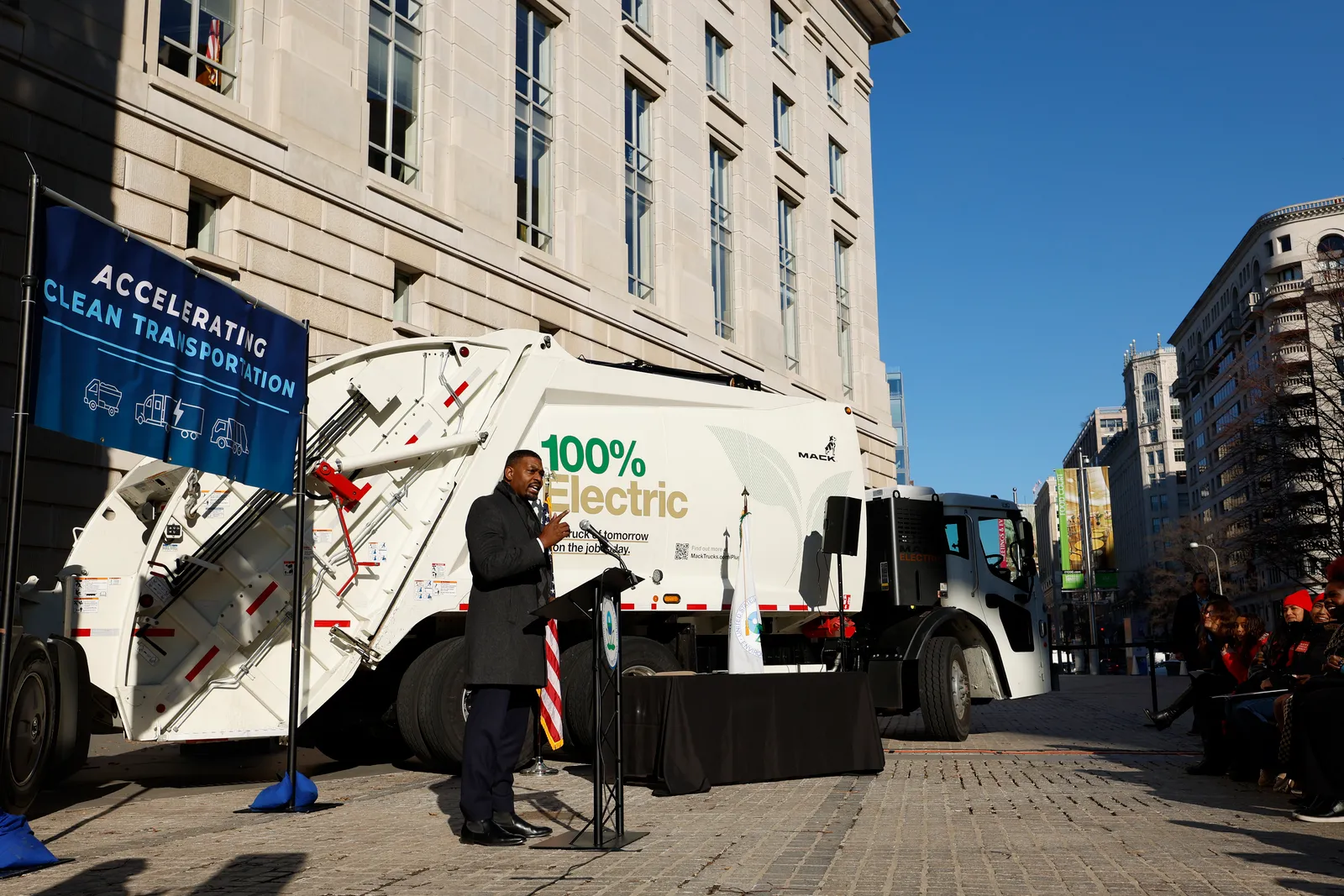
Enter eRINs
The potential to generate RINs from renewable electricity systems in 2024 is a long-awaited update that may be especially relevant to the waste industry. Yet the agency’s proposal to have light-duty EV manufacturers, rather than energy producers, manage the eRIN credits has elicited ample pushback.
EPA sees benefits from limiting the number of parties involved in this new program. Biogas trade groups and others don’t think the move to limit control of eRIN credits is rational and are concerned about one major EV player — Tesla — having outsized influence. Comments have also been shared about how the regulations could affect landfills that generate electricity as well as RNG.
Still, observers say the program would be beneficial for landfill operators because they could share in the RIN value, like they would with a third-party RNG developer. Depending on how final eRIN volume targets are calculated, and how the market responds, some landfill operators could even end up receiving a larger share of the eRIN value.
According to ABC, around 2,000 of the estimated 2,300 operating biogas systems in the U.S. produce electricity. Within the landfill sector, it’s also more common for gas systems to generate electricity than RNG.
WM has dozens of these operations in place, with its first project dating back to 1987. The company recently announced it will keep two sites in this category — rather than converting them to RNG sites as planned — due to the proposed RFS changes.
“This, we believe, will be a significant revenue stream for us long term. It's a great example of our ability where we have owned these facilities and invested in them and retained the value. Now we're in a position to optimize the value with this pathway,” said Chief Sustainability Officer Tara Hemmer during a recent earnings call.
Republic Services also sees potential from eRINs — while noting similar industry concerns about logistics — but wants the EPA to go further. The company, which has ambitious fleet electrification targets, said excluding medium- and heavy-duty EVs from the program is “a significant oversight and missed opportunity.”
During a Wednesday earnings call, CEO Jon Vander Ark said the “vast majority” of Republic’s landfill gas projects currently generate electricity and could benefit from the eRIN program, especially if they are used to power the company’s fleet. He said that BP, a joint venture partner on many upcoming landfill gas projects, was similarly “open-minded” about the potential.
“We've got option value with eRINs coming online,” said Vander Ark. “We see it as, over time, a benefit for us because it'll have two pathways.”
While large competitors, such as WM, are still more focused on CNG vehicles that are already part of the RFS system, industry adoption of EVs is expected to grow substantially in the future.
Yet another change could come if the EPA eventually decides to include biomass facilities in the eRIN program. Covanta is among those asking it to reconsider the exclusion of facilities such as its mass burn combustion sites from the upcoming expansion. In comments, it said that doing so would “be consistent with the feedstock neutral intent of the Clean Air Act” and help remedy “EPA’s inconsistent treatment of landfill biogas and WTE.”
Food waste expansion
While all of these proposed changes will be important to landfill operators, they also have implications for anaerobic digesters. Currently, digesters that handle streams such as wastewater and manure generate higher-value RINs (via a code based on feedstock types). But if food waste gets included then the entire project can only generate a less-valuable RIN type. Now, under a proposed update, the EPA would have more nuance in the credits for blended feedstocks.
This could be a notable shift for local governments or companies focused on codigestion, such as Anaergia. Chief Operating Officer Yaniv Scherson said he’s glad to see the agency "setting a precedent and a pathway for blending of feedstocks,” calling the current rules “a barrier for codigestion, which is a big synergy in the industry.”
Groups such as ABC similarly believe the proposed RFS changes could boost the amount of food scrap recycling.
"The combination of eRINs, plus being able to add food waste without taking a discount in your credits, those are the two really new things that could potentially change the waste industry,” said Serfass.
Looking ahead
As the EPA works to finalize its updates for this highly complex program, it will also be grappling with numerous other issues raised by industry groups around compliance timelines, modeling estimates, storage requirements and more. It must also contend with critiques from environmental groups, among others.
Beyond this possible regulatory boost, trade groups and companies envision an even bigger future for RNG in what’s known as the voluntary market.
As ESG-driven companies look to reduce their emissions from energy consumption for heat or power, RNG demand has grown. Long-term offtake agreements are gaining prominence, as reflected in comments from BP after its acquisition of Archaea and in recent updates from landfill companies. As one example, Anaergia touted an agreement with Canada-based Irving Oil to purchase RNG from its digester in Rhode Island.
"What's really going to put jet fuel into the RNG industry is the voluntary market,” said Scherson, predicting that within five years there will be much less focus on RIN values. "This program will become less relevant to the RNG industry, materially less relevant.”
Other trade groups and companies agree that non-transportation demand for RNG is set to grow significantly. In the meantime, Kaye said RNG values in the regulatory compliance markets still tend to be higher, though he expects more convergence over time.
"What this all means for waste companies' investment plans, capital allocation strategies and economics is something investors are closely watching,” said Kaye. “The picture is fluid, but it's positive."


